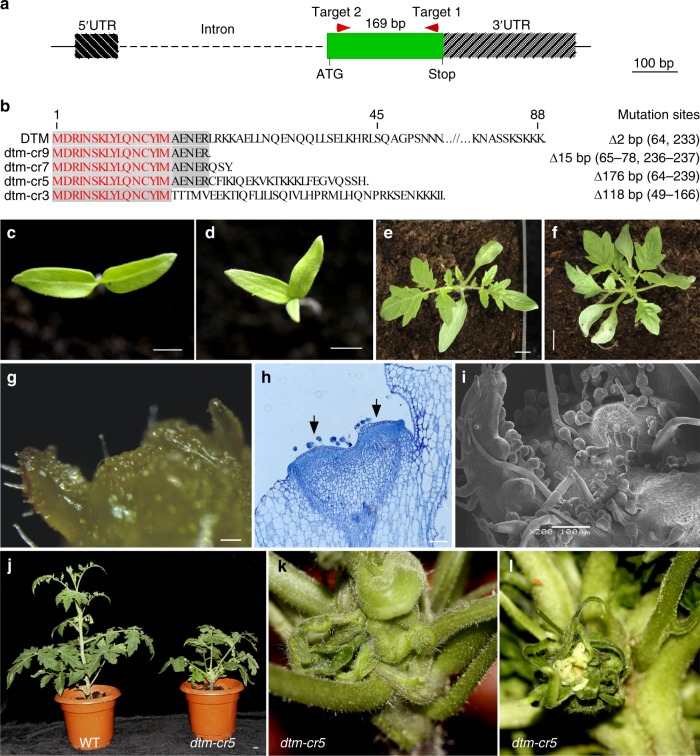Fig. 3.
Phenotypes of the loss-of-function dtm-cr5 alleles created by CRISPR-Cas9. a schematic illustration of the gRNA target design aiming for large deletions in the coding region of DTM. The two single gRNA target sites are indicated by two red arrowheads. b alignment of translated protein sequences from the four dtm-cr alleles containing putative loss-of-function mutations. Sequences identical to wild type DTM are shaded and the first 15 amino acids not changed by mutations in the four alleles are highlighted in red. The nature of the mutations in each of the four alleles is indicated on the right. c–f representative images of dtm-cr5 (d, f) and wild type (Moneymaker, c, e) seedlings at 3 and 9 days after germination (DAG). The four mutant alleles had identical phenotypes including tricot formation (d) and precocious leaf formation (f). Only dtm-cr5 images are shown. g–i dissected dtm-cr5 apices showing shoot apical meristem (SAM)developmental abnormality as revealed by stereomicroscopy (g), paraffin sectioning (h), and scanning electron microscopy (SEM) (i). The dtm-cr5 apex was flat with a very rough surface (g) and two SAM-like structures (indicated by arrows) were observed in longitudinal sections (h). The SEM image (i) shows dense trichomes formed on a dtm-cr5 SAM. j images of dtm-cr5 and wild type adult plants. k–l two close-up images showing an extremely fasciated stem (k) and flower (l) from the dtm-cr5 plant shown in (j). Scale bars, 5 cm (c, d), 1 cm (e, f, j) and 100 μm (g–i)

